




Next: Limitations of the method
Up: Guitton: Hybrid subtraction
Previous: Synthetic data example
The hybrid adaptive subtraction technique has been tested on few shot
records from a land data survey. My goal is to subtract multiple
models from shot records. The preprocessing is described in
Kelamis et al. (1999) and the goal is to attenuate
surface-related multiples only. Note that for these shot records
primaries and multiples are strongly correlated.
To better accomodate for the spatial variability of the data, I do not
estimate one filter only but many filters.
Instead of estimating filters in patches, I estimate a bank of
non-stationary time domain (t, x) filters for both  and
and  Crawley (2000); Rickett et al. (2001).
Crawley (2000); Rickett et al. (2001).
Figures 3a and 4a show the land data
and the multiple model respectively. Figures 3b and
4b display the estimated signal and noise respectively
with the standard approach whereas Figures 3c and
4c show the estimated signal and noise with the hybrid
approach. The hybrid subtraction improves the noise subtraction at far
offsets. It also preserves the signal better as illustrated
in Figure 3c around 1.4 seconds.
A different shot record is processed in Figure 5.
The corresponding noise model and estimated multiples are
displayed in Figure 6.
The same conclusions hold true.
A more interesting shot record with its multiple model
are shown in Figures 7a. In this example,
the multiple attenuation is greatly improved with the hybrid approach.
comp_0
Figure 3 (a) Input data. (b)
Estimated signal with the standard approach. (c) Estimated signal with
the hybrid adaptive subtraction technique. The strong primary at 1.4
seconds is better preserved with the hybrid adaptive subtraction.
![[*]](http://sepwww.stanford.edu/latex2html/movie.gif)




 comp2_0
comp2_0
Figure 4 (a) Multiple model for
the data in Figure 3. (b)
Estimated noise with the standard approach. (c) Estimated noise with
the hybrid adaptive subtraction technique. Far offset events are
better subtracted.
![[*]](http://sepwww.stanford.edu/latex2html/movie.gif)




 comp_1
comp_1
Figure 5 Another shot record.
(a) Input data. (b)
Estimated signal with the standard approach. (c) Estimated signal with
the hybrid adaptive subtraction technique.
![[*]](http://sepwww.stanford.edu/latex2html/movie.gif)




 comp2_1
comp2_1
Figure 6 (a) Multiple model for
the data in Figure 5a. (b)
Estimated noise with the standard approach. (c) Estimated noise with
the hybrid adaptive subtraction technique.
![[*]](http://sepwww.stanford.edu/latex2html/movie.gif)




 comp_4
comp_4
Figure 7 Another shot record.
(a) Input data. (b)
Estimated noise with the standard approach. (c) Estimated noise with
the hybrid adaptive subtraction technique.
![[*]](http://sepwww.stanford.edu/latex2html/movie.gif)




 comp2_4
comp2_4
Figure 8 (a) Multiple model for
the data in Figure 7a. (b)
Estimated noise with the standard approach. (c) Estimated noise with
the hybrid adaptive subtraction technique. The hybrid adaptive
subtraction approach attenuates more multiples. Far offset events
are better subtracted too.
![[*]](http://sepwww.stanford.edu/latex2html/movie.gif)





The land data examples illustrate the efficiency of the hybrid
approach when noise and signal are correlated. In the next section
I discuss some limitations of the method and illustrate them with
a marine data example.





Next: Limitations of the method
Up: Guitton: Hybrid subtraction
Previous: Synthetic data example
Stanford Exploration Project
6/7/2002
![]() and
and ![]() Crawley (2000); Rickett et al. (2001).
Crawley (2000); Rickett et al. (2001).
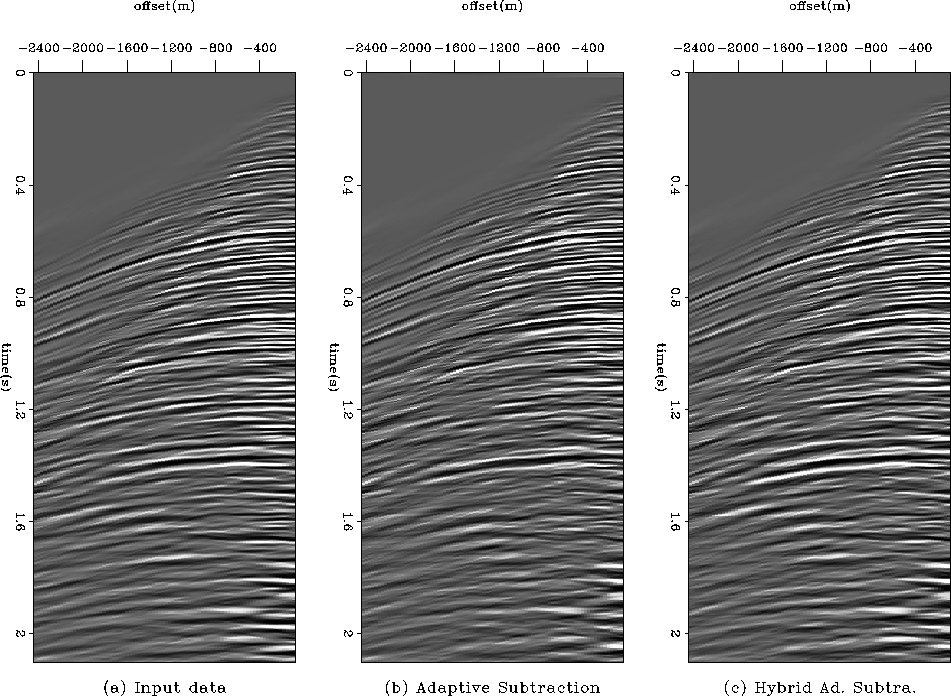
![[*]](http://sepwww.stanford.edu/latex2html/movie.gif)
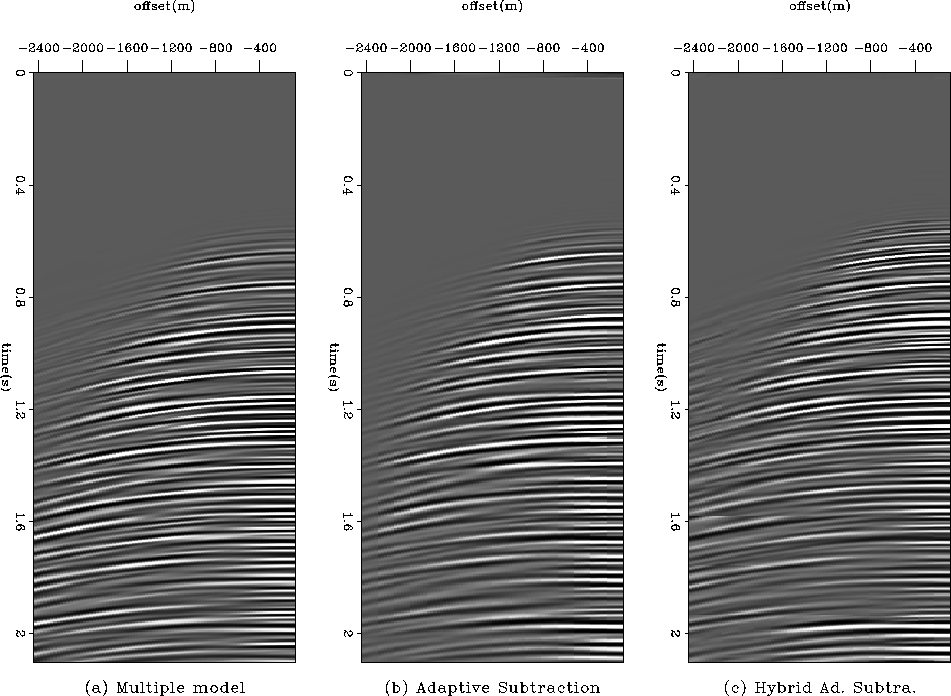
![[*]](http://sepwww.stanford.edu/latex2html/movie.gif)
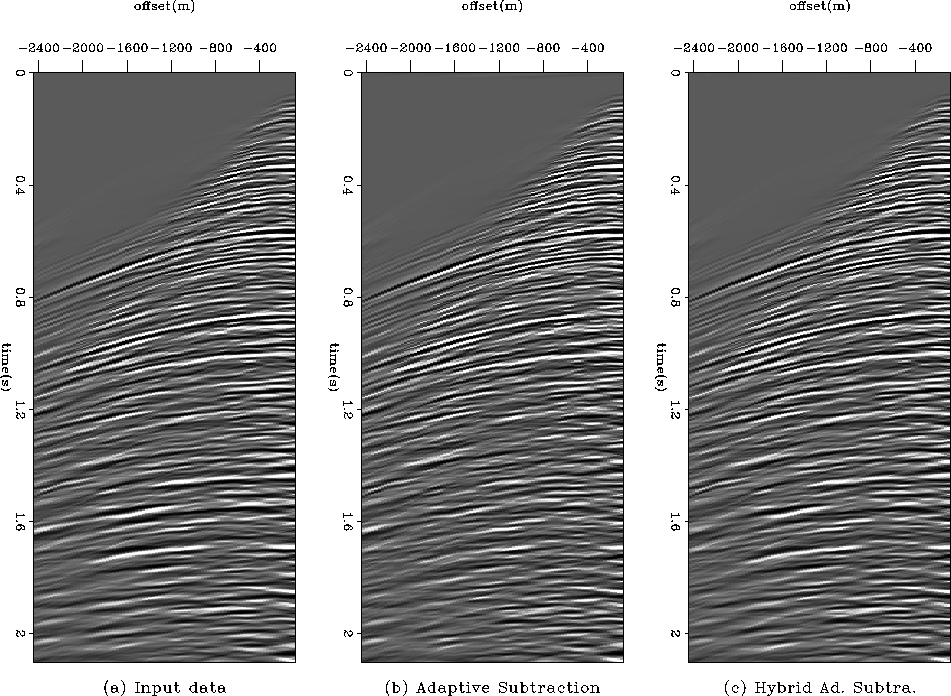
![[*]](http://sepwww.stanford.edu/latex2html/movie.gif)
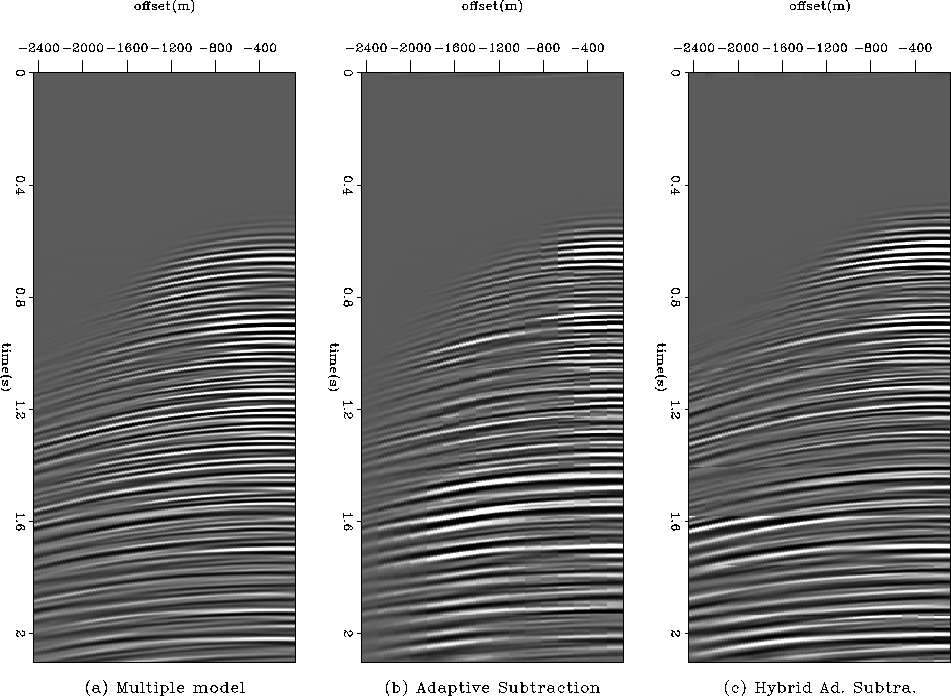
![[*]](http://sepwww.stanford.edu/latex2html/movie.gif)
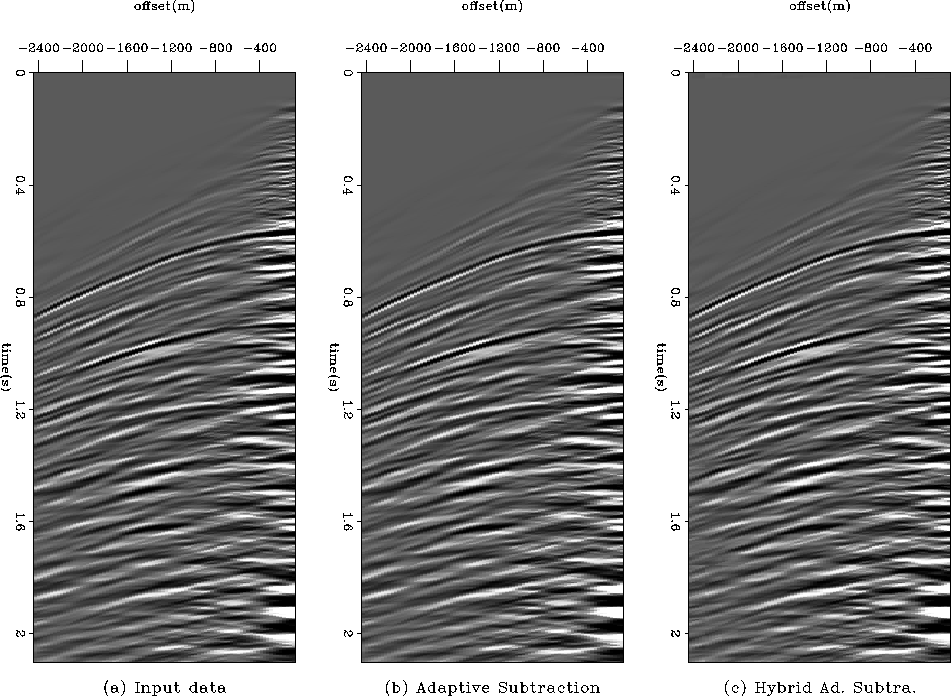
![[*]](http://sepwww.stanford.edu/latex2html/movie.gif)
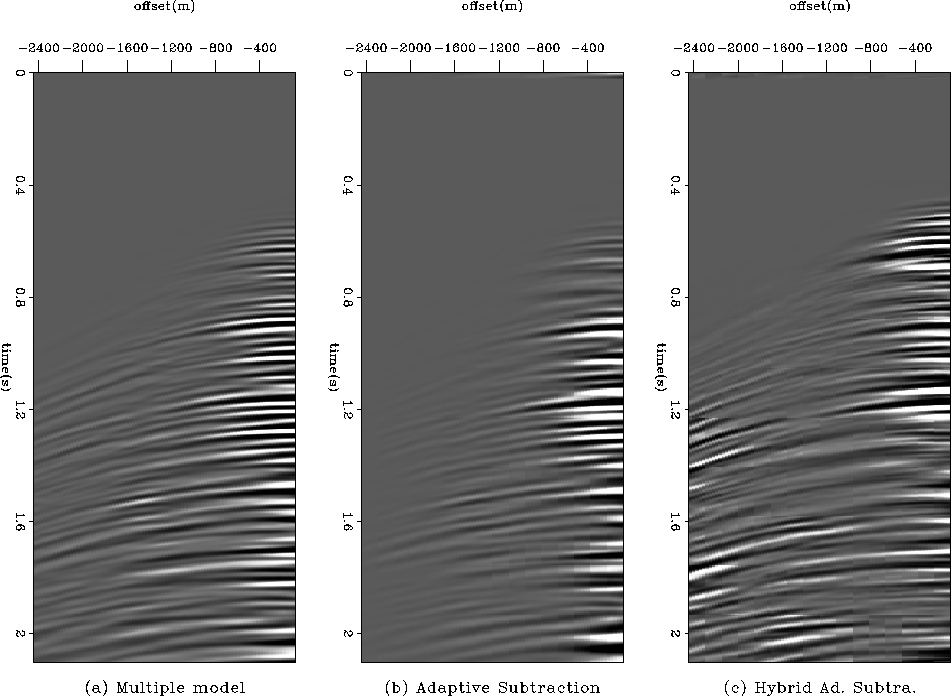
![[*]](http://sepwww.stanford.edu/latex2html/movie.gif)